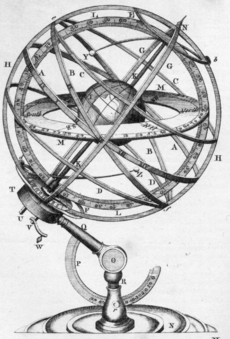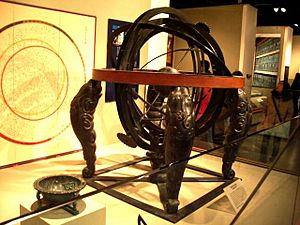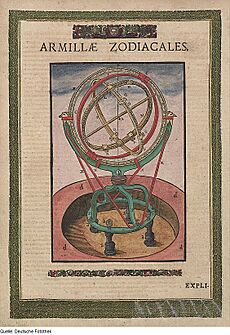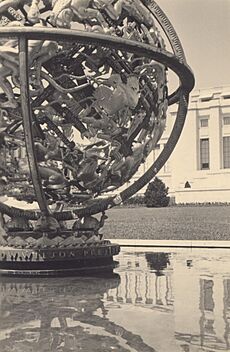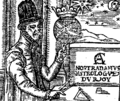Armillary sphere facts for kids
An armillary sphere is like a 3D model of the sky, showing how objects like the Sun and stars appear to move around the Earth. It's made of a framework of metal rings that represent important lines and circles in the sky, such as the equator and the path the Sun seems to follow.
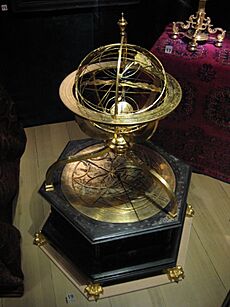
Unlike a celestial globe, which is a smooth ball showing constellations, an armillary sphere focuses on the movements and positions of celestial bodies. It was invented a long time ago, separately in ancient China and ancient Greece, and was later used in the Islamic world and Medieval Europe.
If an armillary sphere has the Earth at its center, it's called a Ptolemaic model. If it has the Sun at its center, it's called a Copernican model.
You can even see an armillary sphere on the flag of Portugal! It's a symbol connected to the Portuguese discoveries during the Age of Exploration. The Beijing Capital International Airport also has a large metal sculpture of an armillary sphere, showing off Chinese inventions.

Contents
How an Armillary Sphere Works
An armillary sphere helps us understand how the sky works. Imagine a set of rings, each representing a key part of the sky:
- The equator ring shows the line around the middle of the sky.
- The ecliptic ring shows the path the Sun appears to take through the year.
- Other rings show the tropic of Cancer, tropic of Capricorn, and the Arctic Circle and Antarctic Circle.
- There are also rings that go through the sky's north and south poles, helping to measure positions.
Inside these rings, there's usually a small globe representing the Earth. You can turn the Earth globe and the rings to see how the Sun and Moon would rise and set at different times of the year and from different locations on Earth. It's a way to show how the Earth's movement (or the apparent movement of the sky) affects what we see.
Before telescopes were invented, armillary spheres were the main tools astronomers used to figure out where stars and planets were in the sky. They were also great for teaching people about astronomy.

A Look Back in Time
Armillary spheres have a long and interesting history, with different cultures contributing to their development.
In China
Chinese astronomers have been making celestial globes and armillary spheres for a very long time. They used them to observe stars and help with calendar calculations. Some historians believe early versions might date back to the 4th century BC.
Over centuries, Chinese inventors like Zhang Heng (around 125 AD) made the armillary sphere complete by adding horizon and meridian rings. Zhang Heng even created the world's first water-powered celestial globe! Later, in 723 AD, Yi Xing and Liang Ling-zan combined this with an escapement device, making it a kind of striking clock that would hit drums and ring bells.
The famous clock tower built by Su Song in 1094 during the Song dynasty used Yi Xing's ideas. It had a waterwheel that powered an armillary sphere, a celestial globe, and even mechanical figures that would announce the time.
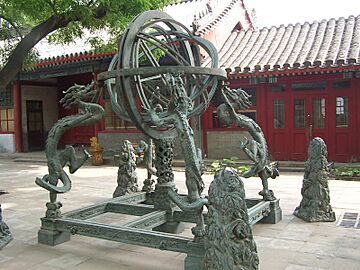
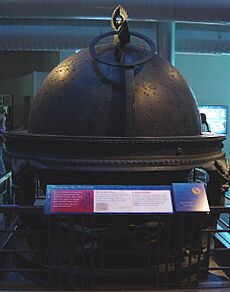
In India
Armillary spheres were also used for observations in India from early times. The Goladīpikā, a detailed book about globes and armillary spheres, was written between 1380 and 1460 CE by Parameśvara. Indian armillary spheres were often based on equatorial coordinates, which is a way of mapping positions in the sky.
In Ancient Greece and Rome
The Greek astronomer Hipparchus (around 190-120 BC) gave credit to Eratosthenes (276-194 BC) for inventing the armillary sphere. The word "armillary" comes from the Latin word armilla, meaning "circle" or "bracelet," because of its rings.
These devices were used as teaching tools in ancient Greece as early as the 3rd century BC. They helped people understand how stars move around the Earth. Before the invention of the telescope in the 1600s, the armillary sphere was the most important tool for astronomers to find celestial positions.

In the Middle East and Europe
Astronomers in Persia and the Arab world, like Ibrahim al-Fazari, continued to build and improve armillary spheres. The spherical astrolabe, a mix of an astrolabe and an armillary sphere, was probably invented in the Middle East during the Islamic Golden Age.
Pope Sylvester II in Europe used armillary spheres for teaching and for making measurements of the sky.
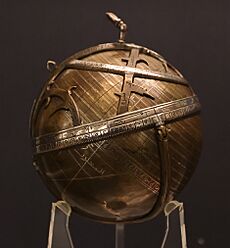
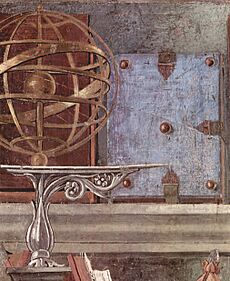
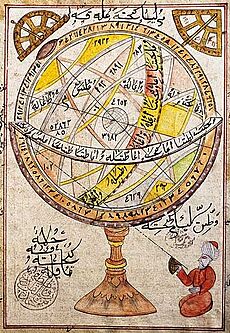
In Korea
Chinese ideas about astronomy and instruments traveled to Korea, where new improvements were made. Jang Yeong-sil, a Korean inventor, built an armillary sphere called Honcheonui in 1433 for King Sejong the Great of Joseon.
Later, in 1669, the Korean astronomer Song Iyeong built the Honcheonsigye, an armillary sphere that was powered by a working clock! This is the only remaining astronomical clock from the Joseon dynasty.
The Renaissance
During the Renaissance, Danish astronomer Tycho Brahe (1546–1601) built three large armillary spheres. He used them to make very precise measurements of the positions of stars and planets.
Armillary spheres were some of the first complex mechanical devices, and their development helped improve many other mechanical inventions. Many important scientists and public figures during the Renaissance had their portraits painted with an armillary sphere, as it symbolized great wisdom and knowledge.
Today, armillary spheres are still useful for teaching. They are like a skeleton celestial globe, with rings showing the important circles of the heavens, all turning on an axis within a horizon.
Paralympic Games
Since March 1, 2014, an artistic model of an armillary sphere has been used to light the Paralympic heritage flame at Stoke Mandeville Stadium in the United Kingdom. This special sphere includes a wheelchair that a user can rotate to spark the flame. It's part of a ceremony to celebrate the past, present, and future of the Paralympic Movement in the UK. The artist Jon Bausor created this unique armillary sphere.
Heraldry and Vexillology
The armillary sphere is often used in heraldry (symbols on coats of arms) and vexillology (the study of flags). It is especially known as a symbol for Portugal, the Portuguese Empire, and the Portuguese discoveries.

In the late 1400s, the armillary sphere became the personal symbol of the future King Manuel I of Portugal. He used it so much that it became a national symbol for Portugal and its overseas empire. Even after Manuel I died, the armillary sphere remained a national symbol.
In the 1600s, it became linked to the Portuguese rule of Brazil. When Brazil became a kingdom united with Portugal in 1815, its coat of arms officially included a golden armillary sphere. When Brazil became an independent empire in 1822, the armillary sphere was still on its national arms and flag. The current Flag of Brazil changed the armillary sphere to a celestial sphere in 1889.
The armillary sphere was brought back into the national arms and the Flag of Portugal in 1911.
Images for kids
-
Sculpture of 13th-century English scientist Roger Bacon holding an armillary sphere, Oxford University Museum of Natural History
-
Young girl with an astronomical instrument, by Jan Gossaert, c. 1520-1540
See Also
- Antikythera mechanism
- Celestial globe
- Orrery
- Atlas (statue)
- Chinese constellations
- De sphaera mundi, describes the late medieval (Ptolemaic) cosmos
- Jang Yeong-sil
- Orrery, a free-standing Solar System model
- Prague astronomical clock, also known as Prague Orloj
- Santucci's Armillary Sphere – largest in the world
- Torquetum


